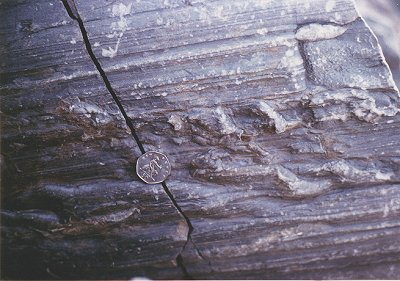|

full-size image
|
The
groove casts shown here are another example of bottom structures
(i.e. those preserved on the undersides of beds). Fragments are dragged
by a current over the underlying mud and the resulting grooves are then
filled with sand deposited by the current. Both flute and groove casts are
commonly produced by turbidity currents.
- How did these structures
form? Draw a sketch to show this.
- Which direction was the
current moving? (with structures such as these, there is not a unique
answer - there are two possible directions, 180 degrees apart)
Scale:
coin is 23 mm across
Grid reference: 979
305
|
